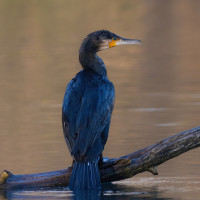Descrizione
The Oostvaardersveld was created in 1968 after the draining of the Flevopolder. The area is about 300 hectares. From the bird hide De Poelruiter you can see various ducks including Canapiglia, Volpoca and Moriglione, but also birds such as Martin pescatore, Usignolo di fiume, Poiana and Cormorano.
_________________________
Nederlands: Ten oosten van de Oostvaardersplassen ligt het Oostvaardersveld. Een mooi natuurgebied met aan grote plas de geweldige vogelkijkhut De Poelruiter. Het Oostvaardersveld ontstond in 1968 na het droogmalen van de Flevopolder. Het gebied is ongeveer 300 hectare groot. Vanuit vogelkijkhut De Poelruiter kun je diverse eenden zien waaronder Canapiglia, Volpoca en Moriglione, maar ook Martin pescatore, Usignolo di fiume, Poiana en Cormorano.
Dettagli
Accesso
You can park in the parking lot at the Kleine Praambult. Click on the P in the map for directions. From the parking lot it is about a 600 meter walk to the bird hide.
_________________________
Nederlands: Parkeren kan op de parkeerplaats bij de Kleine Praambult. Klik op de P in de kaart voor een routebeschrijving. Vanaf de parkeerplaats is het zo'n 600 meter lopen naar de vogelkijkhut.


